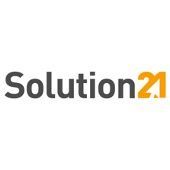Hewlett-Packard’s first computer, the HP 2116A, was developed in 1966 specifically to manage the company’s test and measurement devices. In 1972 the company released the HP 3000 general-purpose minicomputer— a product line that remains in use today—for use in business. In 1976 an engineering intern at the company, Stephen G. Wozniak, built a prototype for the first personal computer (PC) and offered it to the company. Hewlett-Packard declined and gave Wozniak all rights to his idea; later he joined with Steven P. Jobs to create Apple Computer, Inc.
Hewlett-Packard introduced its first desktop computer, the HP-85, in 1980. Because it was incompatible with the IBM PC, which became the industry standard, it was a failure. The company’s next major foray into the PC market was with the HP-150, an IBM PC-compatible system that had a touch screen. Although technically interesting, it also failed in the marketplace. The company’s first successful product for the PC market was actually a printer. The HP LaserJet appeared in 1984 to rave reviews and huge sales, becoming Hewlett Packard’s single most successful product.
In August 2011 Hewlett-Packard announced that it would discontinue making smartphones and its tablet computer, the Touch Pad (which had debuted only seven weeks earlier in July), and that it was considering spinning off its PC business into a separate company. Henceforth, Hewlett-Packard would concentrate on software and services for business, and it acquired the British business software company Autonomy Corporation for $11.1 billion. Apotheker was replaced as CEO in September 2011 by board member Meg Whitman, who had been CEO of the online auction company eBay. In November 2012 Hewlett-Packard accused Autonomy’s management of inflating the value of the company through “accounting improprieties” and announced it would write down Autonomy’s value by $8.8 billion.
Ref: https://www.britannica.com/topic/Hewlett-Packard-Company
Copyright © EGE COMPUTER, All rights reserved.







